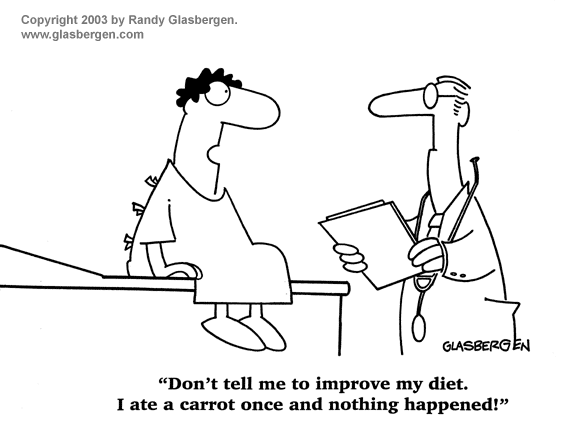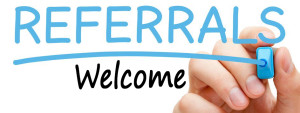Ever feel clueless when it comes to HIV lingo?
Never fear! Click the image below to go to Healthline’s website where you can hover over the words to see their definitions!
 |
>
Source: http://www.healthline.com/health/hiv-aids/words-you-should-know (2014)

PREVENTIVE HEALTH
Preventive Health
Yes, most people will hardly find the need to go to the doctor unless they are truly sick. Obviously, illness may not be ignored. Yet, with the current skyrocketed healthcare costs and the decidedly reduced income levels of most households, who would pay for something they don’t “need”?
The fact is, however, you really do need it! Women, especially, are at significantly higher risk of developing most chronic diseases affecting our planet. These include Diabetes, Heart Disease and Stroke. Preventive health care can save lives. For example, women who undergo mammograms, screenings for cervical cancer among others, definitely have a better chance of latching onto early onset of disease. In many cases, this vastly improves their chances of better management and containment. In some instances, a complete cure may even be possible. Sadly, most women delay or avoid getting necessary care because of cost.  The irony is that preventive health care really does save lives.
The irony is that preventive health care really does save lives.
There are some things you can begin to do right now that don’t require medical assistance or knowledge. The World Research fund (http://www.wrf.org/preventive-healthcare/preventive-healthcare.php) lists four possible immediate steps you can embark on today towards good health practice:
- Don’t smoke or use other tobacco products; drink only in moderation (and red wine is the most acceptable use of alcohol
- Eat a proper balanced diet to get the correct amount of nutrients and calories daily
- Exercise at least three days per week; aerobic exercise will build muscle and endurance
- See your doctor regularly for checkups
As can be seen from the above, the most important part of preventive health care is maintaining good health habits. In addition to developing these habits, however, some screening services may prove worthwhile in either preventing or at least minimizing the effects of disease. Women, especially, should ensure they undergo the following, as regularly as required, for optimal health:
- Pap smear
- Breast self-examination
- Mammography
- Cholesterol screening
- Cervical cancer screening
- Lung cancer screening for smokers
- Abdominal aortic ultrasound
- Blood Pressure
- Blood Sugar
In addition, you should have a plan for getting professional care before the need arises as well as ensure your immunizations are up to date. This is a must for every member of your family.
Often early detection is the key to effective treatment. 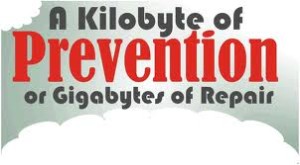 Some symptoms will require you to see your doctor immediately. These include a lump or persistent lesion on your body, a seemingly long lasting fever, persistent and chronic cough, unexplained weight loss and continued aches and pains.
Some symptoms will require you to see your doctor immediately. These include a lump or persistent lesion on your body, a seemingly long lasting fever, persistent and chronic cough, unexplained weight loss and continued aches and pains.
Preventive health is crucial, particularly for women. Protect yourself and your loved ones by taking action to prevent disease and poor health.

Beating Type 2 Diabetes
Here at W.O.M.E.N. and across the nation, this November we once again turn our focus on Diabetes, a silent killer that continues to be one of the most pervasive diseases among African Americans in the United States. Diabetes is an endocrine disease that causes elevated blood sugar levels and is also popularly referred to as the “sugar” disease. It comes in two different packages, Type1 and Type 2 Diabetes. Most people are unaware of the distinctions between the two, and what you can do to prevent or manage the disease.
The prevalence of the disease is staggering. As statistics from the American Diabetes Association reveal, a whopping 18.7% of African Americans over the age of 20 have Diabetes. Further, according to the US Department of Health and Human Services, African Americans are 2.7 times more likely to be diagnosed with Diabetes and 2.2 times more likely to die from Diabetes than non-Hispanic White Americans. Further, Type 2 Diabetes is the most common type found in the United States and provides one of the biggest challenges facing African Americans today, particularly African American women. The US Office on Women’s Health, Womenshealth.gov, states that one in four African American women over the age of 55 has Type 2 Diabetes.
Type 1 Diabetes can occur at any age but is most commonly seen in children and young adults from infancy to the late 30s. In this type, a person’s pancreas produces little or no insulin. People with Type 1 Diabetes manage the disease by giving themselves insulin injections several times every day, or by having the insulin continually infused through a pump. While the causes of the disease are not yet entirely understood, scientists believe that both genetic factors and environmental triggers are involved. Type 2 Diabetes, on the other hand, typically develops after age 40 but can appear earlier, and has recently begun to be diagnosed with more frequency in children. In this form of diabetes, the pancreas still produces insulin, but it does not produce enough or the body is not able to use it effectively. Type 2 Diabetes often has no warning signs. You can have diabetes and not know it. A few common symptoms include excessive thirst and hunger, increased urination, blurred vision, slow healing wounds or sores, fatigue and irritability, frequent yeast infections, and tingling or numbness. Some people even experience weight loss.
While you can’t control some of the risk factors of Diabetes, such as age, race, and family history, there are steps you can take to prevent or delay the onset of Type 2 Diabetes. In the case of those already diagnosed, you can use some of these strategies to manage the disease and live a full and active life.
What are some of these steps?
– Regularly check your blood sugar, cholesterol levels and blood pressure.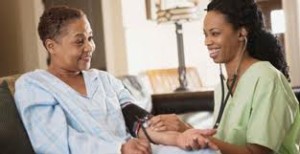
– Consult with your doctor frequently and talk about the disease in your family.
– Calculate your Body Mass Index (BMI) to see if you are at a healthy weight and then strive to achieve or maintain it.
– Eat low-fat, well balanced meals. “You are what you eat” is not an empty overused statement. It is a health fact. Your body will often reflect the contents of your diet.
– Make physical activity a habit. Join a gym; walk for 30-minutes; join a Zumba class; do some aerobic activities of varying intensity throughout the week. Exercise may be difficult in the beginning but soon your body will crave it and drive you to continue to exercise if you keep at it long enough.
– Limit alcohol to no more than one drink per day. You may even choose to eliminate it altogether.
Make a new commitment now to take back control of your life!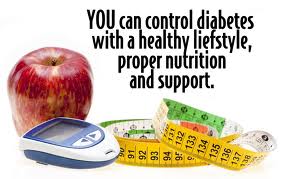
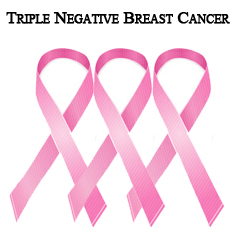
Understanding Triple Negative Breast Cancer
Did you know that there is not just one form of Breast Cancer? In fact, today, there are many different “subtypes” of Breast Cancer. These subtypes of Breast Cancer are generally diagnosed based upon the presence, or lack of, three “receptors” known to fuel most breast cancers: estrogen receptors, progesterone receptors and human epidermal growth factor receptor 2 (HER2). The most successful treatments for breast cancer target these receptors.
Unfortunately, when it comes Triple Negative Breast Cancer, none of these receptors are found in women who are diagnosed. In other words, According to the Triple Negative Breast Cancer Foundation, a triple negative breast cancer diagnosis means that the offending tumor is estrogen receptor-negative, progesterone receptor-negative and HER2-negative, thus giving rise to the name “triple negative breast cancer.” On a positive note, this type of breast cancer is typically responsive to chemotherapy. Because of its triple negative status, however, triple negative tumors generally do not respond to receptor targeted treatments. Depending on the stage of its diagnosis, triple negative breast cancer can be particularly aggressive, and more likely to recur than other subtypes of breast cancer.
Age, Race or Ethnicity: Several studies suggest that being pre- menopausal, African-American, Latina or Caribbean increases your risk of developing basal-like or triple-negative breast cancer. Among African-American women who develop breast cancer, there is an estimated 20 to 40 percent chance of the breast cancer being triple-negative. Researchers do not yet understand why premenopausal women and women in some ethnic groups have higher rates of triple- negative breast cancer than other groups of women.
Source: Guide to Understanding Triple Negative Breast Cancer
Researchers are still learning why some women are more likely than others to develop triple-negative breast cancer. Research supports a relationship between risk and your genes, age, race and ethnicity.

6 Things to Know about Mammograms
A mammogram is an important step in taking care of yourself and your breasts. The American Cancer Society recommends women age 40 and over get a mammogram every year, along with a breast exam by a doctor or nurse. Below are 7 things we think you should know before going for a mammogram to make the visit as comfortable as possible.
1. What is a mammogram?
A mammogram is an x-ray of the breast that’s used to find breast changes. The x-rays used for mammograms produce lower energy x-rays and expose the breast to much less radiation compared with those in the past.
2. Where do you get a mammogram?
Find a center in your area that specializes in mammograms. The US Food and Drug administration certifies mammogram facilities that meet high professional standards of quality and safety. Having all your mammograms at the same facility will make it easier for doctors to compare images from one year to the next.
3. When is the best time to schedule a mammogram?
The best time to schedule your mammogram is about one week after your menstrual period. Your breasts won’t be as tender or swollen, which means less discomfort for you.
4. What do I wear to a mammogram?
It is best to wear a two-piece outfit because you will need to remove your top and bra. Do not apply deodorant, antiperspirant, powder, lotion, or ointment on or around your chest on the day of your mammogram. These products can appear as white spots on the x-ray.
5. What to expect
The entire procedure takes about 20 minutes. The breast is compressed between two plastic plates for a few seconds while an x-ray is taken. It is repositioned (and compressed again) to take another view. There is no denying this process is uncomfortable, but it is necessary to get the clearest view.
6. Getting the results
You should get your results within 30 days of your mammogram. If you don’t, you should call your doctor to ask about your results. If the doctor finds something suspicious, you will likely be contacted within a week to take new pictures or get other tests. This does not mean you have Breast Cancer, it may be dense breast tissue or a cyst, or maybe that the image just isnt clear enough.

Breast Cancer: Myths & Facts
Between our peers, magazines, newspapers and the internet, we are flooded with information regarding Breast Cancer. Sometimes, it can be a bit overwhelming, but with the help of the National Breast Cancer Foundation, Inc., we thought it would be important to share some of the most common myths and facts regarding Breast Cancer.
Myth: Finding a lump in your breast means you have Breast Cancer
Fact: Only a small percentage of breast lumps turn out to be cancer. But if you discover a persistent lump in your breast or notice any changes in breast tissue, it should never be ignored. It is very important that you see a physician for a clinical breast exam. He or she may possibly order breast imaging studies to determine if this lump is of concern or not. Make sure to click HERE to see how to perform your own breast exam at home!
—————————————————————————————————————————————————————————————
Myth: A mammogram can cause breast cancer to spread
Fact: A mammogram currently remains the highest standard for the early detection of breast cancer. Breast compression while getting a mammogram cannot cause cancer to spread. According to the National Cancer Institute, “The benefits of mammography, however, nearly always outweigh the potential harm from the radiation exposure. Mammograms require very small doses of radiation. The risk of harm from this radiation exposure is extremely low.”
—————————————————————————————————————————————————————————————
Myth: If you have a family history of Breast Cancer, it is likely you will develop Breast Cancer
Fact: While women who have a family history of breast cancer are in a higher risk group, most women who have breast cancer have no family history. Statistically only about 10% of individuals diagnosed with breast cancer have a family history of this disease.
—————————————————————————————————————————————————————————————
Myth: Breast Cancer is contagious
Fact: You cannot catch breast cancer or transfer it to someone else’s body. Breast cancer is the result of uncontrolled cell growth of mutated cells that begin to spread into other tissues within the breast.
—————————————————————————————————————————————————————————————
Myth: Deodorant causes Breast Cancer
Fact: Researchers at the National Cancer Institute (NCI) are not aware of any conclusive evidence linking the use of underarm antiperspirants or deodorants and the subsequent development of breast cancer.
—————————————————————————————————————————————————————————————
REMEMBER: You know your body better than anyone else, if you feel something is not normal with your body, it is imperative to see your doctor as soon as you can.

Ovarian Cancer – Signs and Symptoms
It is always important to pay attention to your body and know what is normal for you from head to toe. It is especially important for women to pay attention to certain gynecologic signs that may be abnormal. Those signs may be your body telling you something is seriously wrong. According to the Ovarian Cancer National Alliance, The American Cancer Society estimates that in 2013, about 22,240 new cases of ovarian cancer will be diagnosed and 14,030 women will die of ovarian cancer in the United States. A woman’s lifetime risk of developing invasive ovarian cancer is 1 in 72 and a woman’s lifetime risk of dying from invasive ovarian cancer is 1 in 95.
According to the Centers For Disease Control, Ovarian cancer may cause one or more of these signs and symptoms—
- Vaginal bleeding or discharge from your vagina that is not normal for you.
- Pain in the pelvic or abdominal area (the area below your stomach and between your hip bones).
- Back pain.
- Bloating, which is when the area below your stomach swells or feels full.
- Feeling full quickly while eating.
- A change in your bathroom habits, such as having to pass urine very badly or very often, constipation, or diarrhea.
Research suggests that the majority of women with ovarian cancer experience symptoms. Symptoms vary and often depend on the location of the tumor and its impact on the surrounding organs. Many ovarian cancer symptoms mimic those of less life-threatening conditions such as irritable bowel syndrome which makes it even that much more important to see a doctor if you are experiencing any of the above mentioned symptoms.

HIV/AIDS and Aging
HIV/AIDS and aging were not usually two words that went together. When the epidemic first began to spread, those who were diagnosed were not expected to live much longer. Fortunately,with new medications and treatments, the life expectancy of someone living with HIV/AIDS has increased drastically which makes aging with HIV/AIDS a reality all over the world. In fact, almost one-fourth of people living with HIV/AIDS in our world today are over the age of 50. Living with HIV presents certain challenges, no matter what your age. Yet, older Americans with HIV may face different issues than their younger counterparts, including greater social isolation and the lack of a strong, local support system. Older individuals may also face different stigmas when disclosing their status to partners, family, or friends. Aging normally is associated with a myriad of risks including anything from arthritis to osteoporosis. Yet, complications can arise and illnesses can be worsened with aging and HIV. Some of those specific illnesses include Dementia, Depression, High Cholesterol, and Infections to name a few.
In all actuality, there may even be many more cases today than we know about. Why? One reason may be that doctors do not always test older people for HIV/AIDS and so may miss some cases during routine check-ups. Another may be that older people often mistake signs of HIV/AIDS for the aches and pains of normal aging, so they are less likely than younger people to get tested for the disease. Also, they may be ashamed or afraid of being tested. People age 50 and older may have the virus for years before being tested. By the time they are diagnosed with HIV/AIDS, the virus may be in the late stages.
The number of HIV/AIDS cases among older people is growing every year because:
1. Older Americans know less about HIV/AIDS than younger people do. They do not always know how it spreads or the importance of using condoms, not sharing needles, getting tested for HIV, and talking about it with their doctor.
2. Healthcare workers and educators often do not talk with middle-aged and older people about HIV/AIDS prevention.
3. Older people are less likely than younger people are to talk about their sex lives or drug use with their doctors.
4. Doctors may not ask older patients about their sex lives or drug use or talk to them about risky behaviors.
Remember, W.O.M.E.N. offers FREE and CONFIDENTIAL HIV testing as well as counseling services. There is no reason, especially age, to not stop by and know your status.

Pregnancy and HIV/AIDS – What You Need to Know
Motherhood is an experience that everyone who wants to, deserves to experience. It is as rewarding as it is life changing, and it is imperative that you are in the best health you can be to start your child’s life the healthiest way possible. What most people don’t realize is that there are ways to get pregnant and not infect your partner or the child. With that said, when embarking on this journey, it is imperative to know that HIV can be spread to your baby during the pregnancy, while in labor, while giving birth, or by breastfeeding. Luckily, you will have many choices to make about lowering the risk of passing HIV to your baby. Just because you have HIV doesn’t mean your child will get HIV. In the United States, before effective treatment was available, about 25 percent of pregnant HIV-positive mothers who didn’t breastfeed and did not receive anti-HIV treatment in pregnancy passed the virus to their babies.
Today, the risk of giving HIV to your newborn is below 2 percent. But you and the baby must get the right HIV drugs at the right times. The steps below can lower the risk of giving HIV to your baby.
- -Get as healthy as possible before becoming pregnant.
- -Start HIV treatment before pregnancy if you need it for your own health. Or, you can start treatment during pregnancy to lower the risk of passing HIV to your baby. If you are already on treatment, do not stop, but do see your doctor right away. Some HIV drugs should not be used while you’re pregnant. For other drugs, you may need a different dosage.
- -Make sure your baby is tested for HIV right after birth. Your doctor or clinic should be experienced in managing babies who have been exposed to HIV. They will tell you what follow-up tests your baby will need, and when.
- -Ask your doctor about starting treatment for your baby right away if your baby is diagnosed with HIV. This may require a number of tests and you may not know until he is 2 to 4 months old.
- -Until you know that your baby is HIV-positive or HIV-negative, ask your pediatric HIV specialist if your baby might benefit from anti-HIV medicines. New research shows that putting a newborn on a 2- or 3-drug anti-HIV medicine plan cuts the infant’s risk of HIV by 50 percent (compared to using one drug only).
- -Ask your doctor about other medicines the baby may need to prevent opportunistic infections until you know for sure whether the baby has HIV.
If you want to get pregnant, or just found out you are pregnant, you need to get to a doctor right away. If you need help finding the resources for you, give us a call and we will be happy to help!

What You Need to Know about Hepatitis
To put it simply, Hepatitis means inflammation of the liver. Unfortunately, nothing about Hepatitis is simple. According to the World Hepatitis Alliance, Hepatitis is a disease that that currently affects more than 500 million people around the world and is responsible for approximately 1.5 million deaths a year. Currently the world’s 8th biggest killer, Viral hepatitis is one of the most underestimated diseases on the planet. Although one in three people around the world have been in contact with a hepatitis virus, many people have no idea what it is.
Viral Hepatitis Transmission
People can be infected with the three most common types of hepatitis in these ways:
- HAV: Ingestion of contaminated fecal matter, even in tiny amounts, from close person-to-person contact with an infected person, sexual contact with an infected person, or contaminated food, drink, or objects.
- HBV: Contact with infectious blood, semen, or other body fluids; sexual contact with an infected person; sharing of contaminated needles, syringes, or other injection drug equipment; and needlesticks or other sharp-instrument injuries. In addition, an infected woman can pass the virus to her newborn.
- HCV: Contact with blood of an infected person, primarily through sharing contaminated needles, syringes, or other injection drug equipment, and, less commonly, blood transfusions, sexual contact with an infected person, birth to an infected mother, and needlesticks or other sharp-instrument injuries.
Chronic HCV is often “silent,” and many people can have the infection for decades without having symptoms or feeling sick. Compared with other age groups, people aged 46 to 64 are 4 to 5 times as likely to be infected with HCV. Any sexual activity with an infected person increases the risk of contracting hepatitis. In particular, unprotected anal sex increases the risk for both HBV and HIV. New data suggest that sexual transmission of HCV among MSM with HIV occurs more commonly than previously believed. (according to the Center for Disease Control)
Viral Hepatitis Prevention
If you have HIV infection, you can lower your risk of contracting hepatitis and other bloodborne viruses by not sharing toothbrushes, razors, or other personal items that may come into contact with an infected person’s blood. Do not get tattoos or body piercings from an unlicensed facility or in an informal setting, which may use dirty needles or other instruments. Just as HIV-positive individuals would not want to engage in behaviors that would put them at risk for hepatitis, these same behaviors would also put others at risk for HIV.
- HAV: The best way to prevent HAV infection is to get vaccinated. The Centers for Disease Control and Prevention (CDC) recommends vaccination for HAV for people who are at risk for HIV infection, including MSM; users of recreational drugs, whether injected or not; and sex partners of infected people.
- HBV: The best way to prevent HBV infection is to get vaccinated. CDC recommends universal vaccination against HBV for people who have or are at risk for HIV infection, including MSM; people who inject drugs; sex partners of infected people; people with multiple sex partners; anyone with a sexually transmitted infection; and health care and public safety workers exposed to blood on the job.
- HCV: There is no vaccine for HCV. CDC estimates that people born during 1945 through 1965 account for nearly 75% of all HCV infections in the United States. The best way to prevent HCV infection is to never inject drugs or to stop injecting drugs if you currently do so by getting into and staying in a drug treatment program. If you continue injecting drugs, always use new, sterile syringes and never reuse or share syringes, needles, water, or other drug preparation equipment. You can also reduce your risk for contracting HCV from sexual contact by
- Abstaining from sexual intercourse.
- Being monogamous.
- Using a condom.
- Avoiding rough sex.
- Getting tested for sexually transmitted diseases and HIV.


